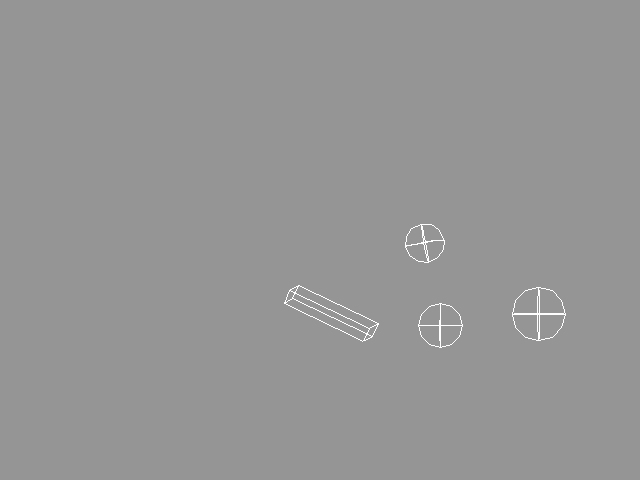6.17.2 Multiple CollisonsThis example is very similar to the previous one except that now we use a chain consisting of several spheres and a cube. The first sphere collides to the second, the second to the third and so on. The purpose of the cube is to show how collisions change the velocity as well as the spin of objects. 1. Create several spheres and one cube so that the first sphere will hit the cube, after colliding with other spheres. If the sphere-cube collision point is not on the line between the centers of gravity of the objects, the collision makes the cube spin, too. 2. Define a velocity for the first sphere towards the other spheres. Make sure that the velocity is high enough (the velocity vector is long enough). 3. Add a tag "FMAS 500" to the first sphere. This redefines the mass of the sphere so that it is heavier than other spheres. If there is no FMAS tag associated with an object, the default mass, 100 kg, is used. 4. Create INT. COLLISION and PROCESSOR methods. |
 YouTube Figure T6-50: A Heavy Sphere Producing Multiple Collision. |
|
Save the whole collision object and play the animation. If the velocity was not high enough, select Project/Project/New and reload the collision object. Again, remember that if you play the animation backwards, you won't get back the original situation. So, the best way to test particle animations and collision detection is to save the original situation and load it back when necessary (or use Undo). |
| ghh don'tpanic |